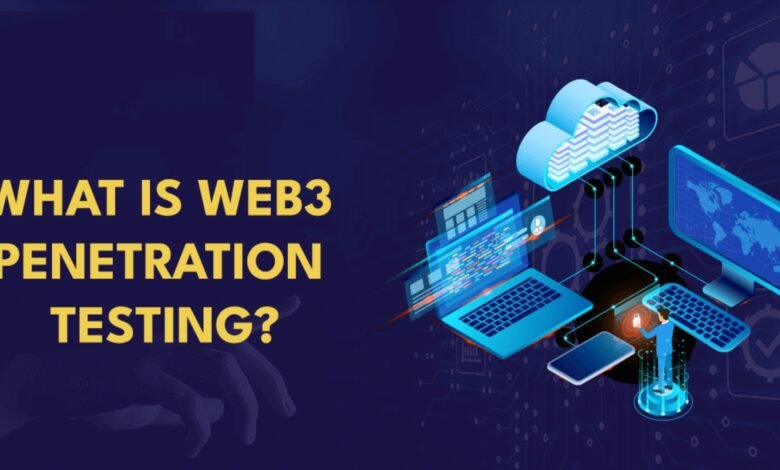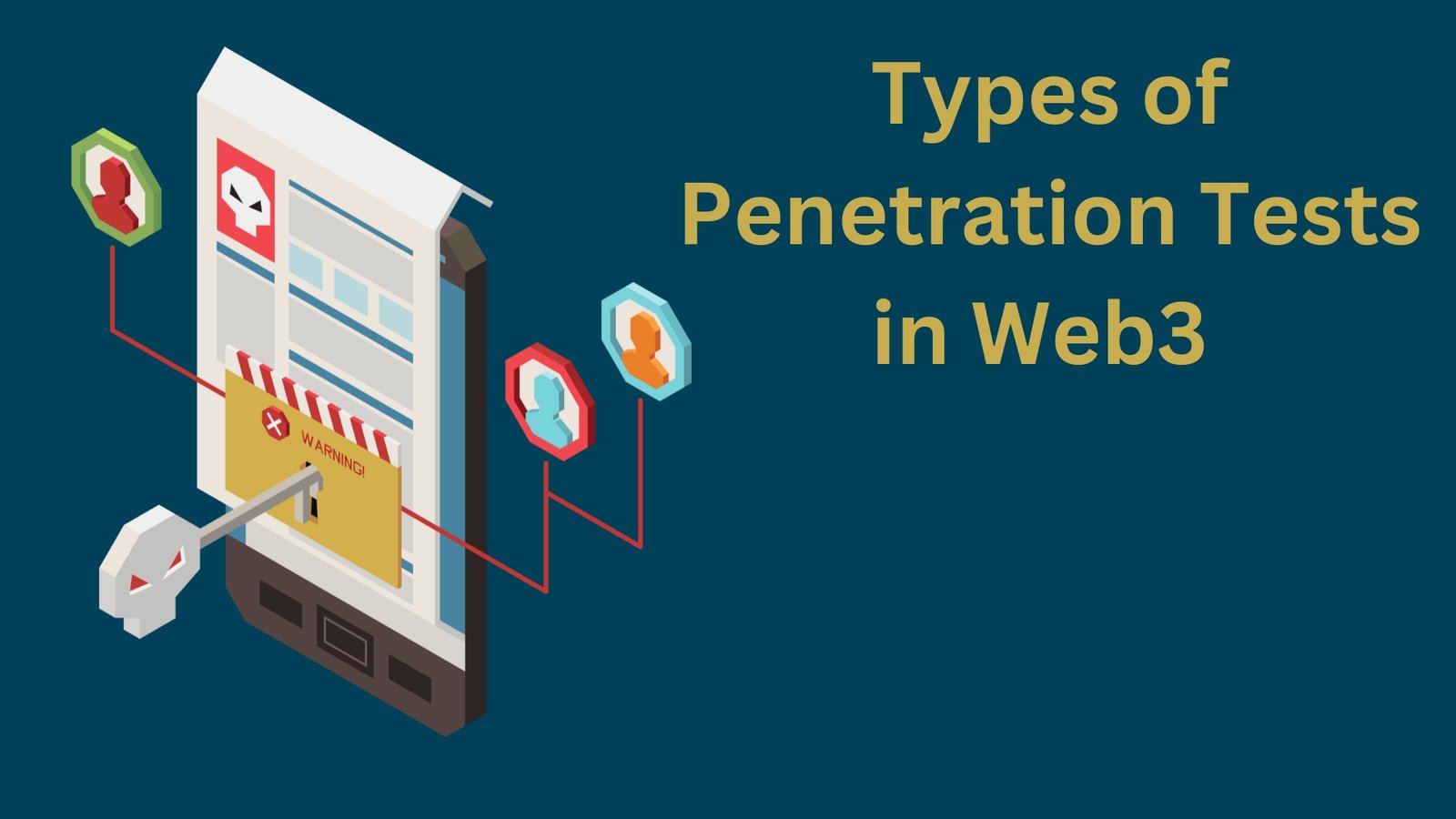
Web3 envisions a future internet that is more decentralized, using decentralized applications (dApps), smart contracts, and blockchain technology. The goal is to build a safer, more democratic, and more open version of the web. Web3 apps rely on a distributed network of nodes to validate transactions and integrate additional features, which differs from ordinary web applications.
Nevertheless, security has become an essential issue for Web3, mainly because of smart contracts. Notable vulnerabilities like integer overflow, denial-of-service, and reentrancy attacks could remain undiscovered in a thorough web3 security audit. Due to the lack of a central server or authority responsible for security, the decentralization of web3 apps also poses a significant threat to user data. Furthermore, hackers can access the code and uncover flaws because Web3 is primarily open-source.
Given the potential severity of the financial losses resulting from the Unlocking Web3 Opportunities security flaws, you may ask what steps are being taken to address them. Penetration testing happens to have a solid solution for preventing web3 security concerns. When assessing decentralized application (dApp) smart contracts and other web3 components, penetration testing can assist in finding weak spots and possible entry points. You need to be familiar with the various forms of Web3 penetration testing and the techniques used to test Web3 apps. Come with me as I explain the ins and outs of Web3 penetration testing.
What is Web3 Penetration Testing?
The methods used to assess the security of Web2 apps are very similar to Web3 penetration testing, also known as pentesting. Web3 development has gotten a lot of traction, which is good news for everyone interested in learning about Web3. Many businesses and programmers are interested in using Web3 technologies and ideas to join the decentralized web. Financial services, video games, and supply chain management are just a few of the many sectors that the advent of Web 3.0 will fundamentally alter.
The amount of investment in Web3 has been rising consistently, as has the number of Web3 startups. The increasing use of Web3 has many benefits, but it also opens the door for security holes that could cause permanent damage. As seen in recent studies, Web3 security vulnerabilities result in enormous losses.
In 2022, more than $3.5 billion was lost due to Web3 security breaches. Furthermore, it has been reported that Web3 security breaches resulted in losses exceeding $650 million in the first half of 2023. In light of this, we must seek out preventative measures that can help secure user information, financial assets, and the blockchain itself.
Protection of web3 applications and users can be achieved better through penetration testing than even the most advanced web3 security solutions. Web3 penetration testing is an all-encompassing method for checking the safety of decentralized applications, blockchain networks, and smart contracts. To find security holes in the web3 environment, the best way to do penetration tests is to mimic actual attacks.
Key Differences in Web3 Penetration Testing

Web3 penetration tests are distinct from more conventional forms of security assessment. Web3 applications operate in decentralized contexts, which is the first noticeable distinction and a source of unique security concerns. Vulnerabilities in smart contracts, for instance, may provide hackers with more entry points. Furthermore, specialized testing expertise and tools are required for Web3 programs due to their unique protocols and interfaces, such as JSON-RPC.
Web3 penetration tests differ from Web2 ones in another way: they leverage blockchain technology. Web3 apps include built-in security features, which can be discovered when you study Web3. Unfortunately, web3 apps were not protected from code or blockchain interaction vulnerabilities by the intrinsic security features.
Above all else, while conducting penetration tests, you must pay close attention to meeting specific web3 regulatory standards. For instance, DeFi programs must adhere to financial standards when looking for vulnerabilities.
Working on Penetration Testing in Web3
To get the most out of Web3 penetration testing, outlining the testing project’s scope is necessary for effective Web3 penetration testing. The best way to finish a security assessment is to assess all of Web3’s possible liabilities to plan for milestones established during the planning stage, a vital process point. Once you have a good grasp of the architecture, you can proceed to the next step of penetration testing: developing a testing strategy. This section provides a comprehensive rundown of the several processes involved in Web3 penetration testing.
Define the Aim of Testing
Web3 penetration testing begins with thoroughly explaining the investigation’s goals and boundaries. Could you please explain the goals of Web3 penetration tests? Specific endpoints, such as decentralized applications, smart contracts, or wallets, must be selected. You need to know the environment to find and evaluate every possible vulnerability.
Web3 Architecture for Pen Testing
A solid grasp of Web3 architecture and technologies is crucial for conducting practical penetration tests in this framework. Web3 applications deviate from conventional web apps in terms of the tools and architecture they employ. Consequently, it would be best to familiarize yourself with Web3 protocols and interfaces, blockchain technology, and programming languages for smart contracts to understand Web3 architecture and technology.
Select the Testing Procedure
The next step in conducting penetration tests is specifying the necessary testing techniques. There are two options for Web3 testing: automatic and manual. Web3 penetration testing frameworks and specialized Web3 security tools are also available. If you understand the testing goals and the intended environment, you can select the most appropriate tools for conducting practical penetration tests.
Prepare Your Testing Plan
Making a testing strategy is the planning process for Web3 penetration. After defining the goals, testing methods, and target environment, the testing strategy should specify the tests you intend to run and the resources you will need. You could also decide on the scheduling of various tests. Involvement from all parties is crucial for reviewing the testing strategy and plan to acquire authorization from all stakeholders.
Types of Penetration Tests in Web3
The following section of the Web3 penetration test guide will go over different kinds of penetration tests. Keep in mind that to find security flaws, penetration tests mimic actual assaults on web3 networks and systems. While looking for ways to lessen the impact of web3 security threats, you may encounter three separate varieties of web penetration testing. The many web3 penetration test types are outlined here.
External Network Penetration Tests
Web3 application perimeter security is the primary target of external network penetration testing. You can find assault simulations, including external threat actors, in these penetration tests. Web application firewalls, intrusion detection systems, and other security controls can assess their efficacy using these tests. Vulnerabilities, including weak password policies, exposed ports, and unpatched software, can be found using an external network penetration test.
Internal Network Penetration Tests
The internal network penetration test is a kind of test that can be used to uncover web3 vulnerabilitieWeb3 vulnerabilities. Ink penetration test. In a misconfigured account, an attacker can simulate gaining access to a Web3 app’s internal network restrictions, improper network segmentation, and unprotected databases, which are some of the internal vulnerabilities that these kinds of penetration testing aim to find.
Application Penetration Test
Application penetration tests are another critical area for Web3 security experts to concentrate on when looking for application vulnerabilities. They help identify security flaws like authentication bypass, SQL injection, or cross-site scripting. Protecting user data and thwarting hackers are two critical goals in application penetration testing.
Other Components of Web3 Penetration Tests
There is more to Web3 penetration testing than simulating assaults on the app’s internal networks, perimeter, or the app itself. You may encounter other tools that reveal various Web3 vulnerabilities when conducting penetration tests.
Web3 penetration testing involves examining smart contracts, blockchains, wallet software, and DevOps. Each component is essential in checking various parts of Web3 for security flaws. This article will discuss the critical topics of Web3 penetration tests.
Smart Contract Audits
No one can deny the importance of smart contracts to the web3 ecosystem. Because they aid in assessing capabilities related to asset management, denial of service, access control, and transaction order dependency, audits of smart contracts are an essential aspect of web3 security audit procedures. Time manipulation, inadequate access constraints, reentrancy attacks, and short address attacks are among the most common vulnerabilities found in audits of smart contracts.
Blockchain Testing
Penetration testing also involves examining critical components and possible attack surfaces. Blockchain tests include checking for weaknesses in P2P protocols, parsing blockchain blocks, authenticating RPC requests, and implementing secure RPC methods. Input management, communication interfaces, operating systems and services, DevOps, and blockchain testing frequently find threat surfaces.
Wallet Software Testing in Web3
Wallet software testing is necessary, as discussed in the assessment of Web3 security tools. A user interface, RPC interface, software dependencies, and transaction management are significant components required in all software. Moreover, Web3 wallet software testing includes reviewing the Web3 wallet’s connection to third-party nodes and services as part of Web3 penetration tests.
DevOps Penetration Testing in Web3
Web3 also includes DevOps penetration testing as a new web penetration test. There aren’t enough security measures to prevent bad actors from exploiting DevOps’s huge technology footprint. Additionally, DevOps grants permission to modify source code and release it to production.
When it comes to DevOps penetration testing, the primary goals are to evaluate the security of the code repository, the management of secrets, and access to the production deployment environment. In addition to authenticating developers’ access to production credentials and critical development components, DevOps penetration tests concentrate on the CI/CD infrastructure.
Conclusion
As this overview has shown, Web3 penetration testing is an excellent method for ensuring the safety of Web3 applications. Because of the enormous monetary losses, Web3 security has become a significant issue for Web3 developers and the community. Because of their decentralized and open-source nature, Web3 apps face many security issues. Users can identify the best ways to protect themselves from these security threats by conducting penetration tests.
Remember that Web3 penetration tests may differ from the traditional kind in some ways. The main goal of penetration tests is to test the resilience of web applications by simulating attacks. Penetration testing can be a great boon to the Web3 development environment by promoting the growth of safe Web3 applications









